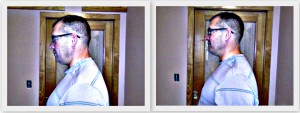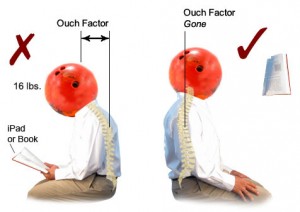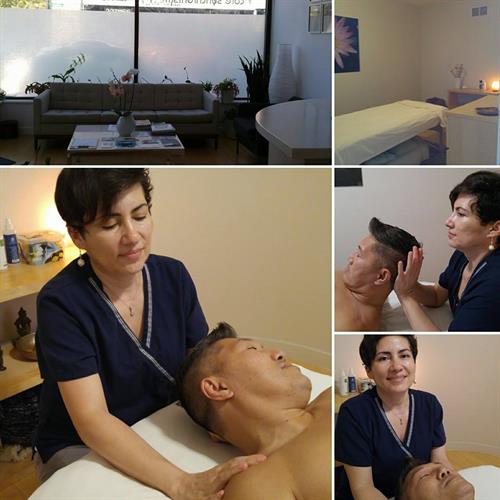Forward head posture can cause a variety of problems including neck pain, mid back pain, and leaning forward while walking, which puts you on your toes, and causing more problems from there.
What can Neuromuscular Therapy do? The body is one unit and treating any one part of the body without looking at the system as a whole would be an ineffective strategy.
So evaluating the whole-body posture with particular attention to the hips, shoulder and head position, the hyoid bone, and TM joint function ability is done before treatment begins.
Treating muscular imbalances and compensatory patterns, elimination of trigger point (a taunt band of muscle fibers, causing chemical and electrical imbalance and blockage) activity in the muscles of the neck, and even of the lumbosacral region and lower limbs, may be critical for complete lasting relief of myofascial pain and dysfunction.
To learn how an effective comprehensive individualized treatment plan applying integrative proven techniques can end pain and improve you health.
Treatment is aimed at eliminating the precipitating factors to affect symmetrical balance of hip, shoulders and head positioning.
Picture before and after of actual client after treatment

How can you tell if you have forward head posture or not? You cannot begin to correct posture problems if you don’t know whether or not you have them. What’s the best way to find out?
Although back aches, headaches etc. are often a tell tale sign, not everyone with incorrect posture has soreness or stiffness – YET!
You can make a posture assessment by standing sideways in front of a mirror. Stand in a typical position, as though you are having a conversation with someone. Don’t cheat! How do you look?
The following are common traits:
- Sub-occipital pain syndromes
- Mouth breathing (sleep apnea)
- Difficulty swallowing
- Teeth clenching
- Face & neck pain
- Migraine headaches
- Uncoordinated gait and loss of body balance
It’s like trying to hold a bowling ball
When the head is held in front of the body instead of directly over the shoulders, physics dictates that it will effectively seem “heavier” due to increased leverage. It is like trying to hold a bowling ball out in front of you all day- your arm would tire very quickly! When you have chronic forward head posture, the muscles of the neck and shoulders have to work overtime just to keep your head up.
“heavier” due to increased leverage. It is like trying to hold a bowling ball out in front of you all day- your arm would tire very quickly! When you have chronic forward head posture, the muscles of the neck and shoulders have to work overtime just to keep your head up.
“For every inch of Forward Head Posture, it can increase the weight of the head on the spine by an additional 10 pounds.” -Kapandji, Physiology of Joints, Vol. 3
This often leads to trigger points (knots) in the muscles and restriction in the vertebral joints, which then cause neck pain and headaches. This slouched posture also puts the shoulders in a less-than-ideal position and can lead to shoulder tendinitis and thoracic outlet syndrome (numbness and tingling in the arms/hands).
In the January, 2004 issue of the American Journal of Pain Management reported on the relationship of poor posture and chronic pain conditions including low back pain, neck related headaches, and stress-related illnesses. “The extra pressure imposed on the neck from poor posture flattens the normal cervical curve resulting in abnormal strain on muscles, ligaments, fascia and bones.”
Research presented at the 31st Annual International Conference of the IEEE EMBS Minneapolis, Minnesota, USA, (2009) stated; “Over time poor posture results in pain, muscle aches, tension and headache and can lead to long term complications such as osteoarthritis. Forward head carriage may promote accelerated aging of intervertebral joints resulting in degenerative joint disease.”.
It appears posture impacts and modulates all bodily functions from breathing to hormonal production. Spinal pain, headache, mood, blood pressure, pulse and lung capacity are among the many conditions influenced by faulty posture.
Any deviation of normal head and neck movement alters precise firing order patterns causing the prime mover muscles to be slow to activate. Substitution patterns develop as synergistic stabilizing muscles are recruited to do the job of the prime mover.
[schedule_now]
